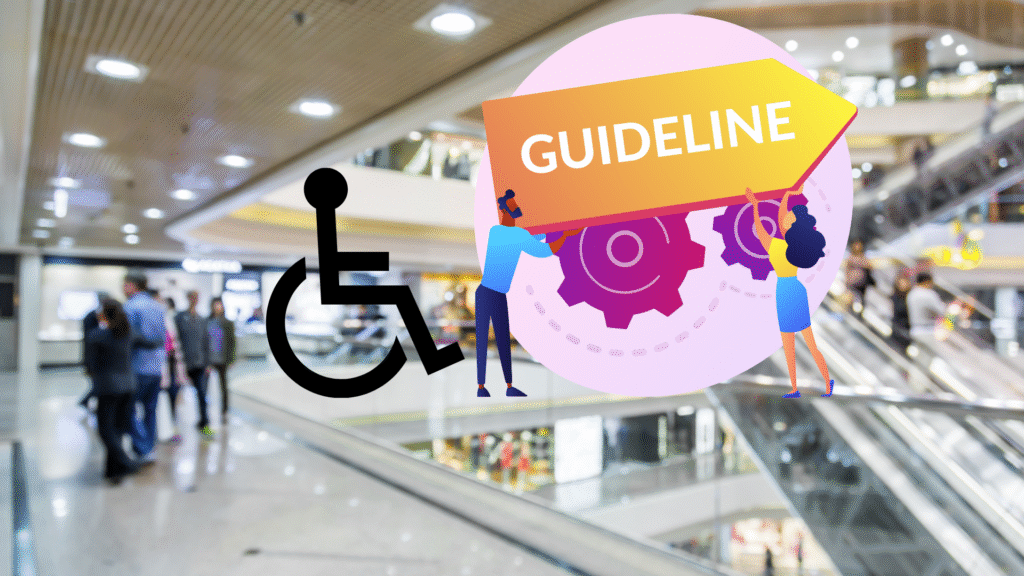In 2025 and beyond, creating accessible retail spaces is no longer a recommendation—it’s a responsibility. As the number of Australians living with mobility challenges continues to rise, shopping centres and retailers must adapt. Integrating assistive technology into retail planning not only meets legal and ethical standards, but also improves customer experience and business growth.
Let’s explore why assistive tech matters, what practical steps mall owners and retailers can take, and how you can ensure your space is truly inclusive.
Why Retail Spaces Must Embrace Assistive Technology
Shopping should be a seamless experience for everyone. But for many Australians living with disabilities, it often isn’t. Narrow aisles, inaccessible entrances, or lack of mobility equipment can turn a simple shopping trip into a frustrating ordeal.
With assistive technology in retail, these barriers can be removed. Tools such as mobility scooters, power wheelchairs, and clearly marked access routes allow for greater freedom, independence, and comfort—especially in large retail environments.
More than 4.4 million Australians live with some form of disability. If shopping centres and stores fail to accommodate this large demographic, they risk losing not only customers but credibility.
Core Principles of Inclusive Retail Planning
Building an accessible retail environment starts with planning. It’s not just about adding ramps or allocating accessible parking. It’s about integrating inclusivity from the ground up. Here are four core principles to guide decision-makers:
- Universal Design: Design with everyone in mind. Ensure aisles are wide, counters are at accessible heights, and navigation signage is easy to read.
- Proactive Equipment Availability: Provide essential mobility devices such as scooters and power wheelchairs at entrances.
- Customer-Centred Access: Make restrooms, fitting rooms, and common areas easily accessible and clearly signposted.
- Consistent Staff Training: Ensure all staff members understand how to assist customers using mobility aids.
Choosing the Right Assistive Equipment
Not all equipment suits every environment. Mall operators and large retailers should evaluate their space and customer needs before purchasing assistive technology.
Here’s a quick checklist for selecting the right tools:
Mobility Scooters for long-distance indoor travel
Power Wheelchairs for high-mobility independence
Manual Wheelchairs as a readily available alternative
Portable Ramps and automatic doors in entry areas
Visual and audio signage for customers with sensory disabilities
At Assistive Tech Hub, we offer expertly selected scooters and wheelchairs that suit shopping environments. Our models are lightweight, sturdy, and designed for Australian infrastructure.
Training Staff to Support Mobility Aid Users
Even with the best equipment, the customer experience hinges on staff interaction.
All employees—especially those in high-traffic zones—should be trained to:
- Offer and operate mobility devices safely
- Respect personal space and autonomy
- Assist customers in finding accessible entrances, restrooms, and lifts
- Understand how to respond to disability-related emergencies
Well-trained staff contribute to a positive reputation and repeat visits from customers with mobility needs.
Store Layout Tips for Wheelchairs and Scooters
A great layout can prevent congestion, boost safety, and support efficient navigation. Here’s how to make your store layout mobility-friendly:
- Keep aisles at least 1.5 metres wide
- Avoid clutter and unnecessary displays at ground level
- Provide seating areas for rest and recovery
- Ensure automatic doors and low-threshold entrances
- Use non-slip flooring and avoid abrupt level changes
Planning new renovations? Integrate these ideas early. Already operating? Small adjustments still make a big impact.
Meeting Australian Accessibility Standards
Under the Disability Discrimination Act 1992 and Australian Standards AS 1428, retailers are legally obligated to make their premises accessible. Non-compliance can lead to complaints, legal action, and financial penalties.
Make sure your design and operations comply with:
- AS 1428.1 for general access
- AS 1428.2 for enhanced mobility provisions
- AS 1735.12 for lifts
- National Construction Code requirements
Consult an accessibility specialist or contact us at Assistive Tech Hub to ensure your assistive technology meets compliance and serves your community well.
At Assistive Tech Hub, We Make Inclusion Easier
Inclusion should be built into every square metre of your shopping centre—not added as an afterthought. That’s why we provide:
- Mobility scooters that handle long retail visits
- Power wheelchairs that are sturdy, comfortable, and easy to use
- Friendly consultation on accessible retail planning
- A disability-friendly showroom and free in-home trial services for businesses
When you invest in accessibility, you’re not only following the law—you’re shaping a better, more inclusive Australia.
FAQs
Q: Do all stores in a mall need to be individually accessible?
Yes. Under Australian law, every business open to the public must provide equitable access unless unjustifiable hardship can be proven.
Q: What’s the most important assistive tech to offer in a shopping centre?
Mobility scooters and power wheelchairs are among the most essential, especially in larger spaces where walking long distances is a barrier.
Q: How can we train staff on accessibility best practices?
You can work with inclusion consultants or use government resources. Assistive Tech Hub also offers training support and resources for business owners.
Q: Can small stores afford these changes?
Absolutely. Many improvements—like layout changes and better signage—are low-cost but high-impact. You don’t need to do everything at once.
Q: Where can I explore equipment options?
You can browse our mobility scooters and power wheelchairs online or contact us for a free consultation.
Final Thoughts: Inclusion Is a Business Advantage
Designing for accessibility doesn’t just benefit a few—it transforms your entire customer base. When malls and retailers plan for all abilities, they increase foot traffic, brand loyalty, and community trust.
If you’re looking to make your space more inclusive and future-ready, now is the time to act.
Check our products online and Contact us for a tailored accessibility plan, and to explore the best assistive tech solutions for your retail space.



